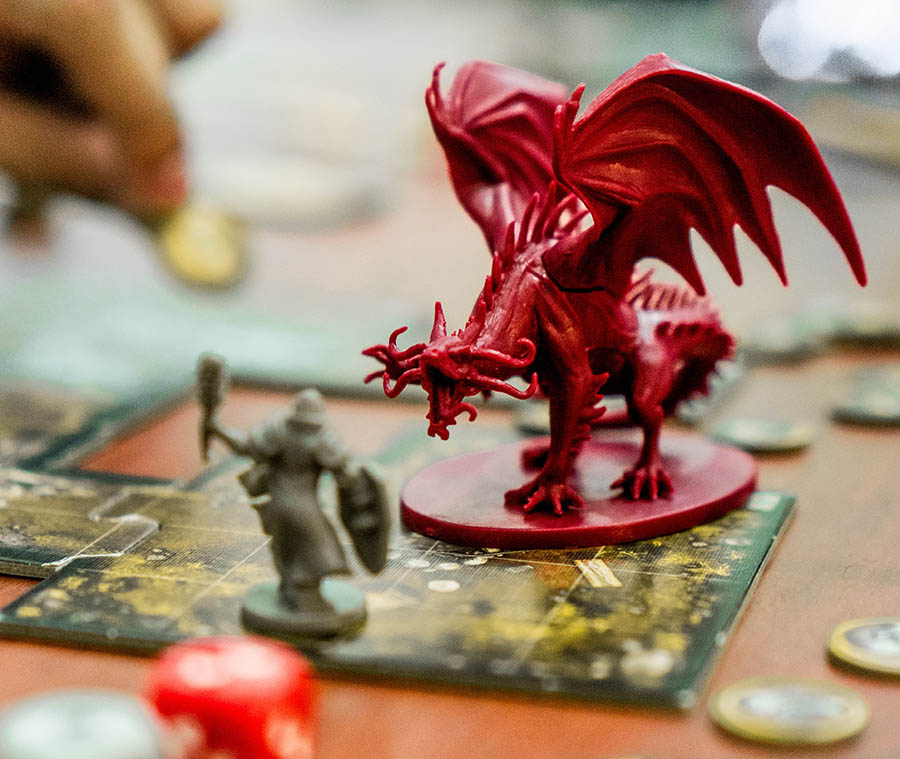You’ve probably been hearing a lot about Dungeons and Dragons recently, and for a good reason. A whole new generation is discovering the magic and wonder of this game; YouTube channels where people can watch real-time DnD games played by experts (with excellent voice and characterization abilities) get millions of views, forums explore strategies in exquisite detail, and countless player-made dungeons are available for sharing. The only issue is that many of us haven’t played in years (or ever), meaning there’s a lot to learn. The following will take a look at just one of these learning curves—conditions, specifically, the restrained condition.
What Is DnD?
You probably are more aware of DnD than you realize; it’s constantly referenced in pop culture. The role-playing game Dungeons and Dragons was originally a massive hit in the 70s and 80s but has recently come back around as a retro and fun activity to play with friends.
Some believe that the boom in highly complicated fantasy video games like The Witcher and Elder Scrolls can shoulder part of the piqued interest in rich fantasy games. Couple that with the 70s and 80s nostalgia that is super popular (thank you, Stranger Things), and you have a DnD resurgence.
What Is 5E?
For those of us who are just getting involved in the Dungeons and Dragons world, it can be a bit daunting to see how many abbreviations and game-specific jargon exist when you’re just trying to figure out how to play. This guide is focused on Dungeons and Dragons 5E, which means the fifth edition. The fifth edition was released in 2013. Players might choose to begin with this edition for a number of reasons, but in particular, this was the first edition that was developed using a public open playtest. The starter set (including the Lost Mine of Phandelver) and rules for this edition were released in 2014, along with the monster manual, dungeon master’s guide, and player’s handbook. All of these texts can really help give you a solid starting ground if you’re new to D&D or just new to the fifth edition.

What Are Conditions?
In the fifth edition of Dungeons and Dragons, there are things called conditions. These change up a creature’s abilities in a wide number of ways and can be brought about using spells, class features, monster attack, or another effect. The majority of conditions are impairments to the creature’s abilities or choices, but there are some that are advantageous.
Conditions last until a counter occurs or for a duration of time that the effect specifies. In the event that multiple effects bring about the same condition on a creature, every occurrence of the condition has its own duration, but these effects don’t stack on top of each other. A condition is either present or not present; it cannot be present twice or three times. It’s a yes or no situation.
The conditions present in the fifth edition include:
- Blinded
- Charmed
- Deafened
- Frightened
- Grappled
- Incapacitated
- Invisible
- Paralyzed
- Petrified
- Poisoned
- Prone
- Restrained
- Stunned
- Unconcious
- Exhausted
As you can imagine, any of these conditions can drastically alter gameplay by giving a massive advantage or disadvantage to player characters or non-player characters. If used correctly within gameplay strategy, they can make a huge difference in your success. In contrast, if conditions are not handled properly, they can result in devastating blows, even losses. Conditions are also an excellent aspect of the game to keep in mind as a dungeon master; you could even keep them in mind while worldbuilding. Understanding that conditions are available to slow those playing your dungeon or give them a hand when they are facing a tough opponent can help you structure a fun and appropriately-challenging dungeon.

What Is The Restrained Condition?
Restrained condition is the result of a creature becoming restrained. This means that the creature’s speed is brought down to zero, which basically means that they cannot move. As well, all benefits and bonuses associated with the creature’s speed don’t take effect. There is also an attack roll advantage for those attacking the restrained creature and a disadvantage to the creature’s roll. There is also a disadvantage when it comes to Dexterity saving throws. It’s pretty easy to get a visual grasp on the idea by picturing the creature in question tied up.
How To Get Out Of A Restrained Condition
If your character is struggling with the restrained condition, there are a few things you can do. Gamers at https://thegmsays.com/, break down ending a restrained condition into two categories. If the restrained condition came about because of a spell, the spell will include a description of what is needed to end the effect. Of course, this could result in a wide variety of possible responses for you. It’s also possible for you to break free from the condition using your character’s abilities, either Strength/Athletics or Dexterity/Acrobatics.
Can You Cast Spells While Restrained?
Because there are spells that might help out in a restrained condition, many people immediately wonder whether spells are allowed. The answer is yes, spells are allowed, most of the time. Pay attention dungeon masters; if the way the character was restrained prevents them from using their mouth (if they are gagged or have cloth stuffed into their mouth), then the spell cannot be uttered and, therefore, cannot be used.
Can You Teleport Away From Restraints?
In most situations, you can teleport away from a restrained condition. This is a commonly resorted to tactic to help deal with the restrained condition, but again, depending on the specifics of how you teleport and the specifics of how the restrained condition came about could limit this. If you’re a dungeon master and you don’t want teleportation to occur, you can probably set up the restraint to prevent teleportation.
Hopefully, the above information has expressed fully what restrained condition is as well as made clear the profound impact that this effect can have on gameplay. The best way to learn how to utilize this condition is to include it in your play.

